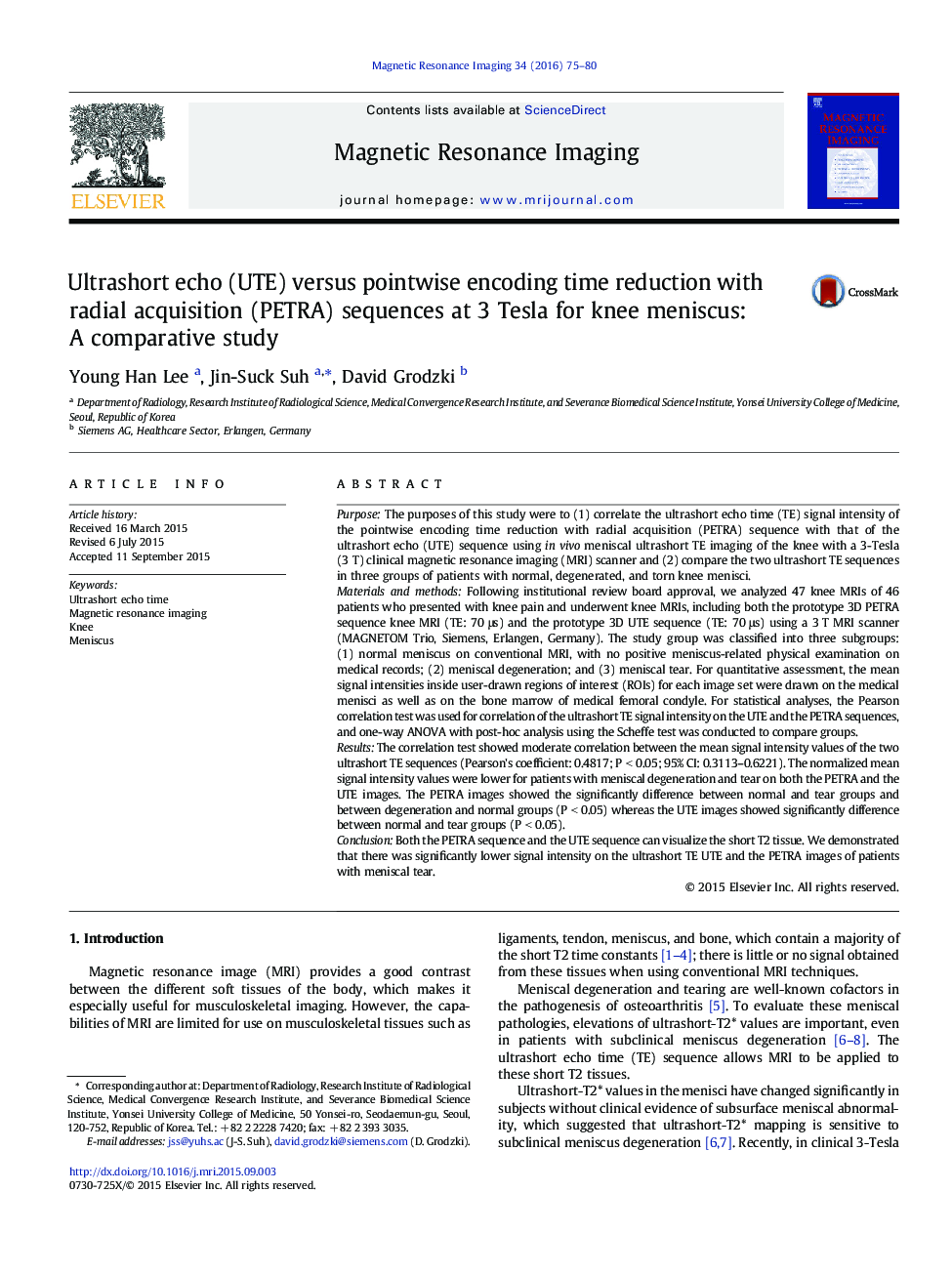| کد مقاله | کد نشریه | سال انتشار | مقاله انگلیسی | نسخه تمام متن |
|---|---|---|---|---|
| 1806203 | 1025190 | 2016 | 6 صفحه PDF | دانلود رایگان |
PurposeThe purposes of this study were to (1) correlate the ultrashort echo time (TE) signal intensity of the pointwise encoding time reduction with radial acquisition (PETRA) sequence with that of the ultrashort echo (UTE) sequence using in vivo meniscal ultrashort TE imaging of the knee with a 3-Tesla (3 T) clinical magnetic resonance imaging (MRI) scanner and (2) compare the two ultrashort TE sequences in three groups of patients with normal, degenerated, and torn knee menisci.Materials and methodsFollowing institutional review board approval, we analyzed 47 knee MRIs of 46 patients who presented with knee pain and underwent knee MRIs, including both the prototype 3D PETRA sequence knee MRI (TE: 70 μs) and the prototype 3D UTE sequence (TE: 70 μs) using a 3 T MRI scanner (MAGNETOM Trio, Siemens, Erlangen, Germany). The study group was classified into three subgroups: (1) normal meniscus on conventional MRI, with no positive meniscus-related physical examination on medical records; (2) meniscal degeneration; and (3) meniscal tear. For quantitative assessment, the mean signal intensities inside user-drawn regions of interest (ROIs) for each image set were drawn on the medical menisci as well as on the bone marrow of medical femoral condyle. For statistical analyses, the Pearson correlation test was used for correlation of the ultrashort TE signal intensity on the UTE and the PETRA sequences, and one-way ANOVA with post-hoc analysis using the Scheffe test was conducted to compare groups.ResultsThe correlation test showed moderate correlation between the mean signal intensity values of the two ultrashort TE sequences (Pearson's coefficient: 0.4817; P < 0.05; 95% CI: 0.3113–0.6221). The normalized mean signal intensity values were lower for patients with meniscal degeneration and tear on both the PETRA and the UTE images. The PETRA images showed the significantly difference between normal and tear groups and between degeneration and normal groups (P < 0.05) whereas the UTE images showed significantly difference between normal and tear groups (P < 0.05).ConclusionBoth the PETRA sequence and the UTE sequence can visualize the short T2 tissue. We demonstrated that there was significantly lower signal intensity on the ultrashort TE UTE and the PETRA images of patients with meniscal tear.
Journal: Magnetic Resonance Imaging - Volume 34, Issue 2, February 2016, Pages 75–80
